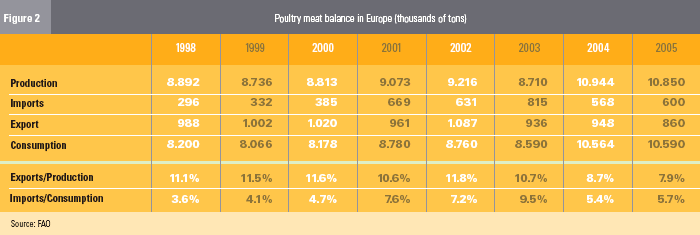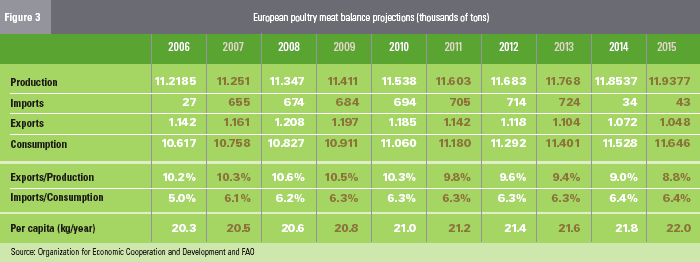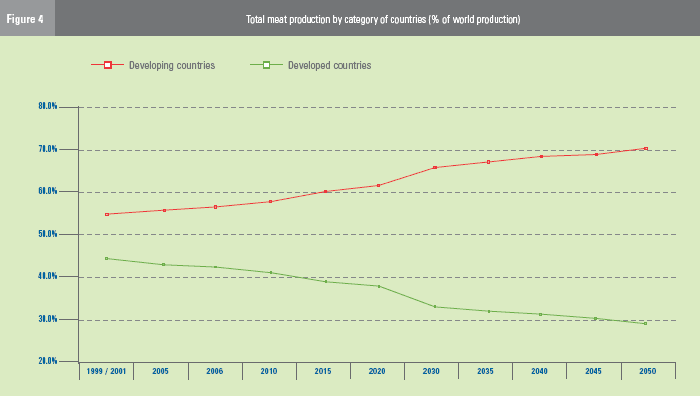
Poultry Summit
Meet Osler Desouzart
Osler Desouzart is an internationally acclaimed agriculture and meat industry consultant who has spent much of his professional life marketing meat products.
He formerly headed the foreign trade departments for the largest pork and poultry industries in Brazil (Sadia and Perdigão) and has occupied several top positions in Brazilian professional organizations, including the Brazilian Poultry Exporters Association and the Brazilian Pork Meat Industry Association.
Desouzart holds advanced degrees in law, marketing, and export and import management, and is fluent in English, French, Portuguese, Spanish, and Italian.
For the past four years, Desouzart has been president and CEO of his own firm, OD Consulting, which is based in Alphaville, São Paolo, Brazil, and specializes in providing services to agro-meat industries worldwide.
Though the past 30 years have been full of achievements in the poultry industry, there have also been lots of problems, says Osler Desouzart, a well known global meat industry
analyst based in Brazil.
"Too many companies have relied only on uninformed intuition and 'grow-big' philosophies—and not enough on good planning," he says, adding that results have been predictable."
"Look in the Who's Who of today's poultry industry and compare that with the Who's Who of 20 years ago," he adds. "It's evident that a lot of companies failed to survive." Why did they fail? And what can today's poultry companies do to avoid a similar fate and, better yet, prosper?
That was the topic of Poultry Summit, a conference that took place last year in Capri, Italy. Sponsored by Schering-Plough Animal Health,
the conference brought together a dozen top executives from the EU's largest poultry companies to discuss the challenges they share in the face of new competition, shifting consumer trends, dwindling water supplies and poultry disease.
Poultry Summit also presented a rare opportunity for the executives to share frank discussions with one another about where they feel the industry is now and how they think it will evolve in the years to come.
The big get bigger
Desouzart, who was charged with leading the day's thought-provoking discussions at Poultry Summit,
pointed out that the global poultry industry has become increasingly concentrated in recent years,with large companies getting larger and small ones either being absorbed by industry giants or disappearing altogether. For example, in 2000 the three largest poultry companies in Brazil produced about 26% of the national total. By 2004 the "Big 3" were producing nearly 32% of the total.
Similar figures from the US are even more dramatic: In 1984 the three largest US poultry companies produced about a quarter of the national total. They are now producing more than half.
"This move toward concentration is exerting more and more
pressure on companies; profit margins, which have been thin all
along, are getting even thinner," Desouzart said.
And he doesn't see that changing any time soon. Growing competition from inexpensive imports is adding to those pressures and
has become a contentious topic for poultry producers in
the European Union. Some producers think pressing their respective
governments for more protectionist policies will
provide some relief, while others are looking to expand, cut costs
and make their operations more efficient.
But Desouzart thinks neither option offers a long term solution.
Instead, he told the meeting's participants, poultry companies that
prosper will be those that create value through locally
produced, branded products.
Executive decisions
Desouzart urged the group to develop a whole new mind set to prosper in the future.
Over the past 40 years we've built the poultry industry by concentrating on reducing mortality, by increasing feed conversion,
and by cutting down on the number of days it takes to get birds ready for processing," he said.
But over the next 40 years, he added, producers who rely only on improving those variables are going to encounter limitations inherent with that approach (Figure 1).
"We're not going to be able to reduce mortality to zero," he said. "Nor are we going to be able to reduce feed consumption to zero nor grow the bird in 24 hours."
'Hunt in pack' strategies
Instead, he said, producers need to develop different kinds of efficiencies in their operations–what he calls wolf like,
'hunt in pack' strategies–that stress collaboration and improved logistics.
"Companies can gain from working together on issues that benefit the whole industry and then sharing their ideas and their solutions," he said. One good way for companies to pool that information, he pointed out, is by participating in strong, professionally managed associations.
After common goals have been achieved, he said, individual companies can "show their teeth and claim their share."
The industry promises to be larger in scale in the coming years, Desouzart added. He also sees more vertical integration of companies, as well as increased marketing to big supermarket chains.
Positive signs for industry
Though competition from exports and other pressures continue to make the poultry business challenging for EU producers, Desouzart said he sees plenty of signs that the industry can prosper in the years ahead.
He cited projections from a United Nations FAO study that show EU poultry production increasing significantly over the next decade along with imports,exports and per capita consumption.
"Is Europe kaput? The facts and data say otherwise! They say 'Europe is fine!' (Figures 2 and 3)."


But the key for successful producers, Desouzart added, will be for producers to use their creativity to clearly differentiate their company from others in the eyes of consumers.
To do that, he emphasized,
producers need to use constant innovation to build strong brands— brands that integrate service,convenience and value.
"Constant innovation is what creates strong brands. And strong brands are not only a protection against competition. They're an asset that can make competitors virtually irrelevant," he said.
The key to dealing with competition, especially competition from inexpensive frozen imports, is to "choose your battles carefully," the analyst added. "Don't fight your competitors in cost competitiveness and production flexibility. That's where they are strongest."
Instead, "compete with your strengths—producing fresh, local, branded products, products with a 'familiar face' and a history." He emphasized to EU producers that although European consumers are drawn toward low prices, value is an even stronger factor influencing purchasing behavior.
Desouzart also pointed out that competing exporters have some inherent limitations that EU producers can turn into opportunities. "They have neither the logistics nor the marketing structure to get known, branded products to the consumer," he said.
That means they have to concentrate more on the industry and restaurant chains—all the more reason for EU producers to focus on delivering value added,
branded, quality products to the consumer market, he said.
Water a key factor
Another topic Desouzart covered with the producers was how dwindling water resources in both developed and developing countries are going to affect the production of poultry worldwide.
Even though vast areas of the world remain undeveloped and may remain that way for the foreseeable future, in many struggling countries technological advances are inexorably pushing development.
Desouzart told attendees that historically, as societies develop, they tend to increase their consumption of meat—an activity that requires significant utilization of fresh water resources.
"As the human diet migrates more and more toward higher in take of animal products, it's going to stress our water resources in ways we have not previously seen," he warned.
He pointed out that besides being both a scarce and a finite resource, water is not well distributed. "There are huge disparities between water availability versus the distribution of the world's population," he noted.
For example, although Africa and Asia account for about 75% of the world's population, they have only about 36% of the world's internal renewable fresh water resources.
Though water supply is a sobering issue, Desouzart said he thinks it may offer poultry producers an advantage over producers of other meat products. "For one thing,we know that meat production has been steadily shifting from developed countries to developing countries,"
he said. "And we anticipate that trend will continue (Figure 4)."

And, he added, of the meat products consumed worldwide, poultry is the most efficient in terms of consuming water resources.
Poultry production is more water-efficient than production of pork,
and pork production is more water-efficient than production of beef. To back up that point, Desouzart cited a 2006 report published by a United Nations agency that found that it takes about 2,800 liters (740 gallons) of water to produce a single kilo of poultry meat.
That's compared with about 5,900 liters (1,559 gallons) to produce a kilo of pork,and a whopping 15,900 liters (4,200 gallons)
of water to produce a kilo of beef.
"That's an important distinction because it gives poultry producers a competitive edge," he said.
Desouzart also emphasized that as water resources decline and environmental agencies inevitably impose stiffer water use regulations, smart poultry producers will need to devise creative ways to intelligently stretch water resources, such as concentrating on recycling efforts and improving irrigation.
Maintain bird health
Above all other factors, Desouzart told attendees, maintaining the health of flocks will be essential for growers striving to maximize their profits.
"Disease is the only dark cloud on our horizon," he says. "We know that coccidiosis, enteritis, and other diseases can take a heavy toll, so it is our challenge to effectively control these problems and keep our birds healthy."
Management strategies that focus on controlling disease as well as winning consumer confidence—such as relying more on vaccination programs rather than controversial antibiotics—can go a long way toward helping companies build strong brand identity, he says.
"This is just one important way companies can separate themselves from the rest of the pack and demonstrate their commitment to quality and to their consumers."
Spring 2008
Back to European Edition (#1)














